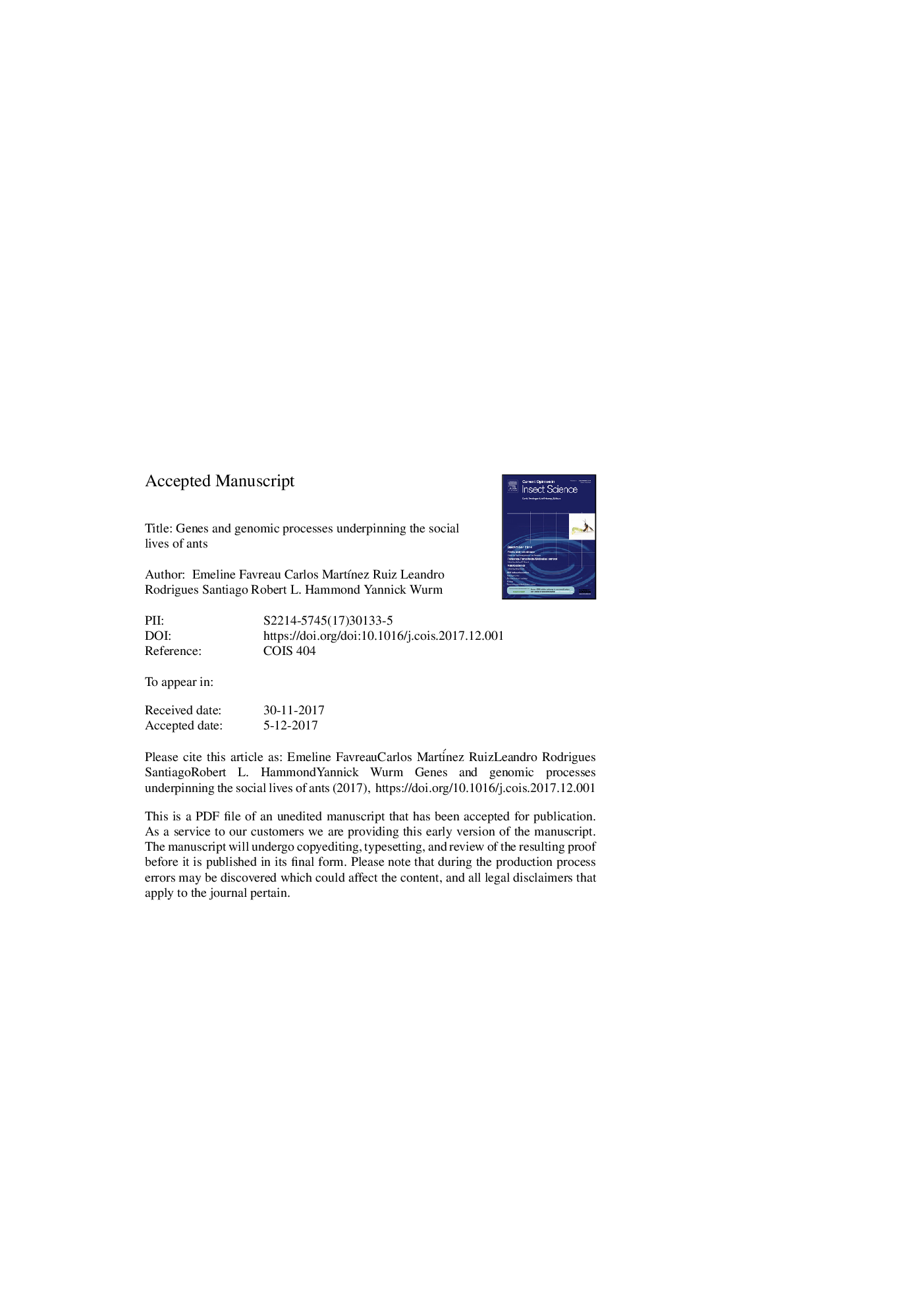| Article ID | Journal | Published Year | Pages | File Type |
|---|---|---|---|---|
| 8878540 | Current Opinion in Insect Science | 2018 | 21 Pages |
Abstract
The >15Â 000 ant species are all highly social and show great variation in colony organization, complexity and behavior. The mechanisms by which such sociality evolved, as well as those underpinning the elaboration of ant societies since their â¼140 million year old common ancestor, have long been pondered. Here, we review recent insights generated using various genomic approaches. This includes understanding the molecular mechanisms underlying caste differentiation and the diversity of social structures, studying the impact of eusociality on genomic evolutionary rates, and investigating gene expression changes associated with differences in lifespan between castes. Furthermore, functional studies involving RNAi and CRISPR have recently been successfully applied to ants, opening the door to exciting research that promises to revolutionize the understanding of the evolution and diversification of social living.
Related Topics
Life Sciences
Agricultural and Biological Sciences
Agronomy and Crop Science
Authors
Emeline Favreau, Carlos MartÃnez-Ruiz, Leandro Rodrigues Santiago, Robert L Hammond, Yannick Wurm,
